How CNC Repair Services is Carried Out with Precision and Accuracy?
In the realm of modern manufacturing, Computer Numerical Control (CNC) machines stand as the cornerstone of precision engineering. These machines, with their ability to automate and execute intricate tasks with utmost accuracy, have revolutionized industries ranging from automotive to aerospace. However, like any machinery, CNC systems are not immune to wear and tear. When these sophisticated systems encounter glitches or malfunctions, the expertise of CNC repair services becomes indispensable.

Understanding CNC Machines
Before delving into the nuances of CNC repair services, it's essential to comprehend the intricacies of these marvels of engineering. At their core, CNC machines are automated tools controlled by pre-programmed sequences of commands. These commands dictate the movement and operation of cutting, milling, or drilling tools with unparalleled precision. This precision ensures uniformity and consistency in the manufactured components, making CNC machining indispensable in mass-production environments.
The Importance of Timely Repairs
Despite their robust construction and advanced technology, CNC machines are subject to wear and tear over time. Factors such as regular usage, environmental conditions, and inadequate maintenance can lead to various issues, ranging from minor errors to catastrophic failures. Prompt and effective repairs are crucial to minimizing downtime and maintaining production efficiency.
Expertise in Action: CNC Repair Services
CNC repair services encompass a wide array of activities aimed at diagnosing, troubleshooting, and rectifying issues plaguing CNC machines. Specialized technicians and engineers typically offer these services with in-depth knowledge of CNC systems and their underlying mechanisms.
Here's a glimpse into the typical workflow of CNC Repair Services:
Diagnosis: The first step in repairing a malfunctioning CNC machine is identifying the root cause of the problem. This involves thorough inspection, testing, and analysis of various components, including motors, drives, controllers, and sensors. Advanced diagnostic tools and software are employed to pinpoint the exact nature of the issue.
Troubleshooting: Once the problem is identified, the repair technician devises a troubleshooting plan to address it effectively. This may involve recalibration, replacement of faulty parts, software reprogramming, or realignment of components. Attention to detail is paramount during this phase to ensure the problem is resolved comprehensively.
Repair and Maintenance: With the troubleshooting plan in place, the technician proceeds to execute the necessary repairs. This may require specialized tools and equipment to disassemble, repair, and reassemble intricate components. Simultaneously, regular maintenance tasks such as lubrication, cleaning, and alignment adjustments are performed to prevent future issues.
Testing and Validation: Following the repair and maintenance procedures, rigorous testing is conducted to validate the effectiveness of the interventions. This involves running test programs, performing quality checks on machined parts, and monitoring the machine's performance under various operating conditions. Only after thorough testing and validation is the repaired CNC machine deemed fit for production use.
The Role of Technology in CNC Repair Services
In recent years, technological advancements have transformed the landscape of CNC repair services, empowering technicians with innovative tools and solutions. Remote diagnostics and monitoring systems allow technicians to analyze CNC machine performance in real time, enabling proactive maintenance and troubleshooting. Augmented reality (AR) and virtual reality (VR) applications provide immersive training experiences for repair technicians, accelerating skill development and enhancing problem-solving capabilities.
The Role of Siemens Digital Feed Drive
Siemens digital feed drive integrates cutting-edge technology with precision engineering to revolutionize machining processes. This innovative system enhances machine tool performance by optimizing feed rates based on real-time data and predictive analytics. By dynamically adjusting cutting speeds and tool paths, Siemens Digital Feed Drive maximizes productivity, minimizes cycle times, and ensures superior surface quality in machining operations. Its seamless integration with Siemens CNC systems empowers manufacturers to achieve unparalleled efficiency and precision in their production processes.
Briefly Put!
In the dynamic world of manufacturing, where precision and efficiency are paramount, CNC repair services play a pivotal role in ensuring seamless operations. By leveraging their expertise, specialized tools, and technological innovations, repair technicians uphold the reliability and performance of CNC machines, thereby sustaining productivity and competitiveness for businesses across industries. As CNC technology continues to evolve, so too will the expertise and capabilities of those entrusted with its repair and maintenance.
